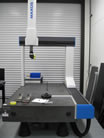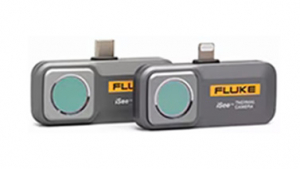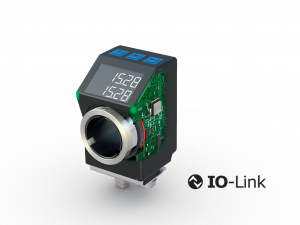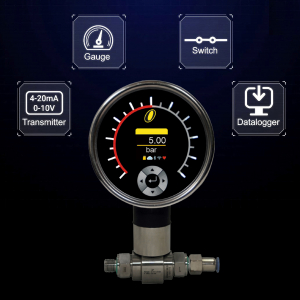Delta Air Lines Improves Blade Maintenance with MAXOS
6th May 2010
Source:
NVision, Inc

Delta Air Lines uses the MAXOS non-contact measurement system from NVision in its contract maintenance operations to achieve the highest possible accuracy in overhauling turbine blades and vanes. The traditional method of measuring blades and vanes to determine the level of repair required and to inspect subsequent repairs involves a series of manual measurements. “We have substantially improved on the traditional approach by using the MAXOS to provide consistent and repeatable measurements on parts with complex geometries and shiny finishes,” said Cameron Leonard, Special Projects Coordinator for Delta Air Lines.
Delta’s contract maintenance operation performs work on Delta planes as well as planes owned by other airlines and leasing groups. One of the most important maintenance operations is repairing blades and vanes at the heart of jet engines. Manuals provide numbers for critical dimensions on these parts such as the chord, axial chord and root. Maintenance staff measure parts and determine whether or not they meet the specifications. If they don’t, the part is repaired by building up the geometry with a welder, then machining it back to the original specifications and measuring it again.
The traditional approach to measurement is based on a number of different mechanical measurement methods. Manual measurement methods work well for parts with simple shapes but they are not easy to use on odd-shaped and contoured parts. “If eight different people measure a part they will get eight different answers,” Leonard said. “Laser scanning would have provided a lot more points, however, this method has difficulty capturing images from highly polished surfaces such as turbine blades. The blades need to be coated before scanning, requiring considerable extra time to put on and remove the coating. We decided to use the MAXOS measurement system because it is much more accurate and captures more points than mechanical measurement but unlike laser scanning can easily capture points from shiny surfaces.”
The MAXOS non-contact measurement system uses a proprietary point of concentrated light that measures parts at high speed. The MAXOS sensor can scan freshly machined surfaces, highly polished surfaces and even mirrors without any need for coating. By measuring with a single concentrated light point, the inaccuracy inherent in manual measurement is eliminated and exceptionally high accuracy of +/- 2 μm on matt surfaces and +/- 10 μm on polished metal can be achieved. The MAXOS utilizes the conventional three axes of a CMM with two additional axes on its sensor along with two optional turntables resulting in up to seven axes in total. All of these axes can be controlled to ensure smooth and fast movement around all of the points to be measured even on difficult to measure horizontal geometry and blade platforms.
“Optical measurement removes the human element, providing substantially greater accuracy and repeatability than manual methods,” Leonard said. “The MAXOS provides a much higher volume of points and cross-sectional data than we could ever hope to obtain from manual measurements. It makes it possible to determine critical dimensions such as the leading and trailing edges to a high level of accuracy. The result is that we can now repair parts that we were unable to repair previously because of limitations in our ability to measure them.”
The traditional approach to measurement is based on a number of different mechanical measurement methods. Manual measurement methods work well for parts with simple shapes but they are not easy to use on odd-shaped and contoured parts. “If eight different people measure a part they will get eight different answers,” Leonard said. “Laser scanning would have provided a lot more points, however, this method has difficulty capturing images from highly polished surfaces such as turbine blades. The blades need to be coated before scanning, requiring considerable extra time to put on and remove the coating. We decided to use the MAXOS measurement system because it is much more accurate and captures more points than mechanical measurement but unlike laser scanning can easily capture points from shiny surfaces.”
The MAXOS non-contact measurement system uses a proprietary point of concentrated light that measures parts at high speed. The MAXOS sensor can scan freshly machined surfaces, highly polished surfaces and even mirrors without any need for coating. By measuring with a single concentrated light point, the inaccuracy inherent in manual measurement is eliminated and exceptionally high accuracy of +/- 2 μm on matt surfaces and +/- 10 μm on polished metal can be achieved. The MAXOS utilizes the conventional three axes of a CMM with two additional axes on its sensor along with two optional turntables resulting in up to seven axes in total. All of these axes can be controlled to ensure smooth and fast movement around all of the points to be measured even on difficult to measure horizontal geometry and blade platforms.
“Optical measurement removes the human element, providing substantially greater accuracy and repeatability than manual methods,” Leonard said. “The MAXOS provides a much higher volume of points and cross-sectional data than we could ever hope to obtain from manual measurements. It makes it possible to determine critical dimensions such as the leading and trailing edges to a high level of accuracy. The result is that we can now repair parts that we were unable to repair previously because of limitations in our ability to measure them.”
Similar articles
More from NVision, Inc
- NVision's Consulting and Engineering Services Improve Fracking Parts 4th November 2014
- Robots Blaze New Path for Glaze 16th April 2013
- NVision Launches New Project Portal for Clients 24th April 2012
- NVision Helps Reverse Engineer Optical Retailer's Store Display, Enabling Millions in Annual Sales 12th December 2011












Write a comment
No comments